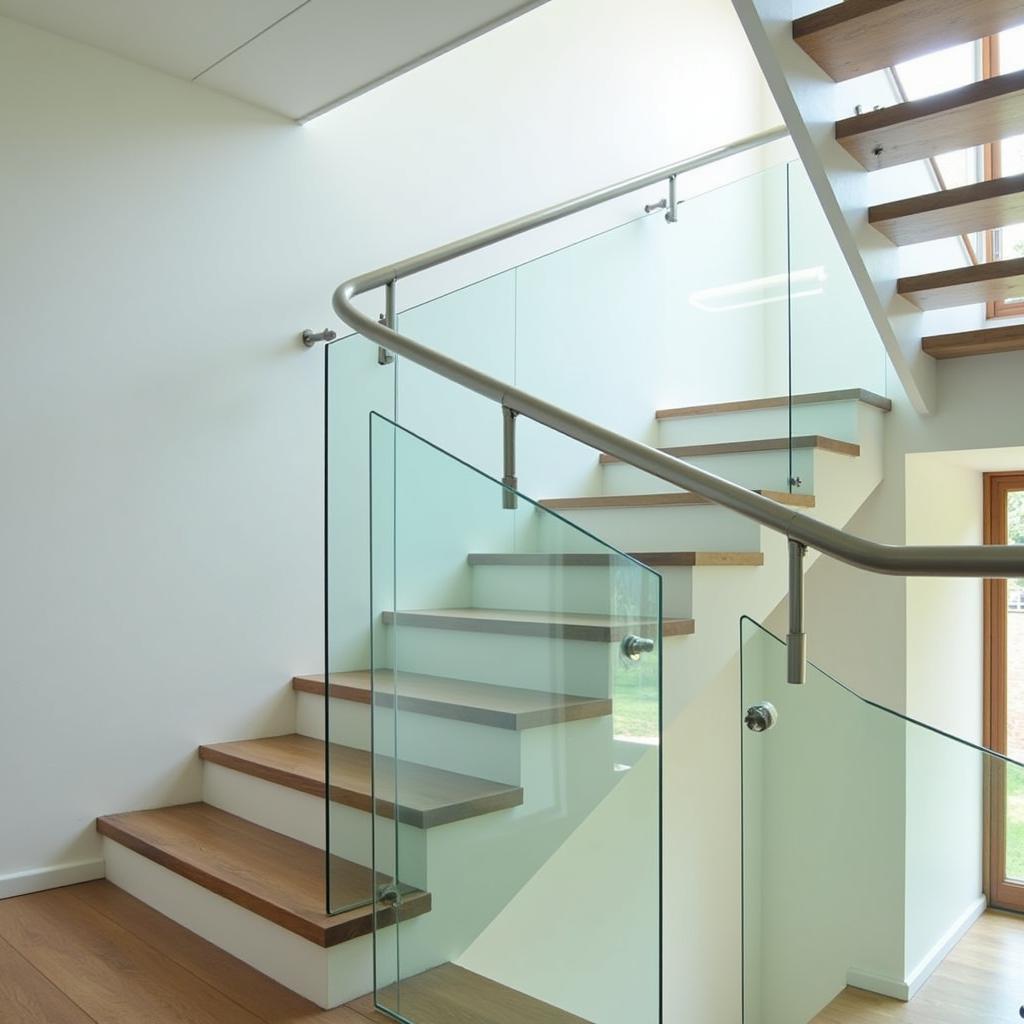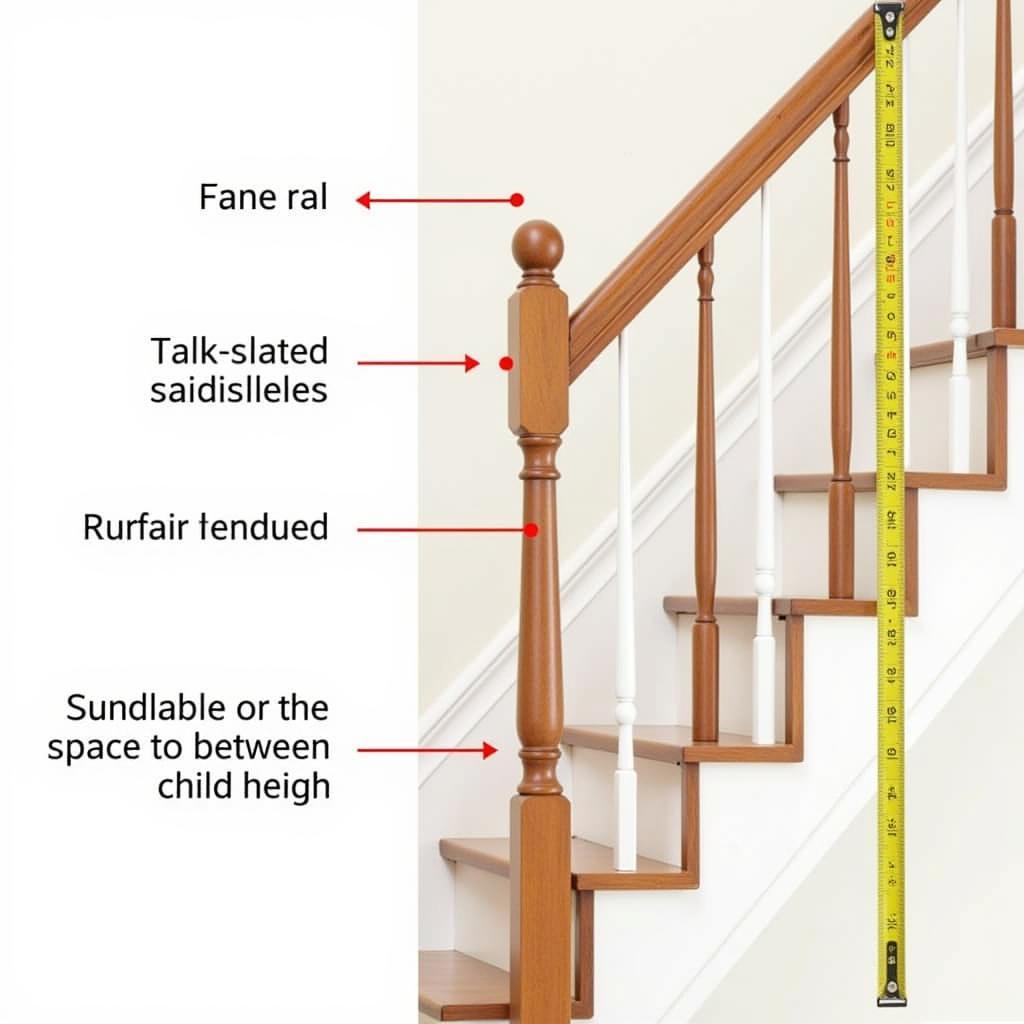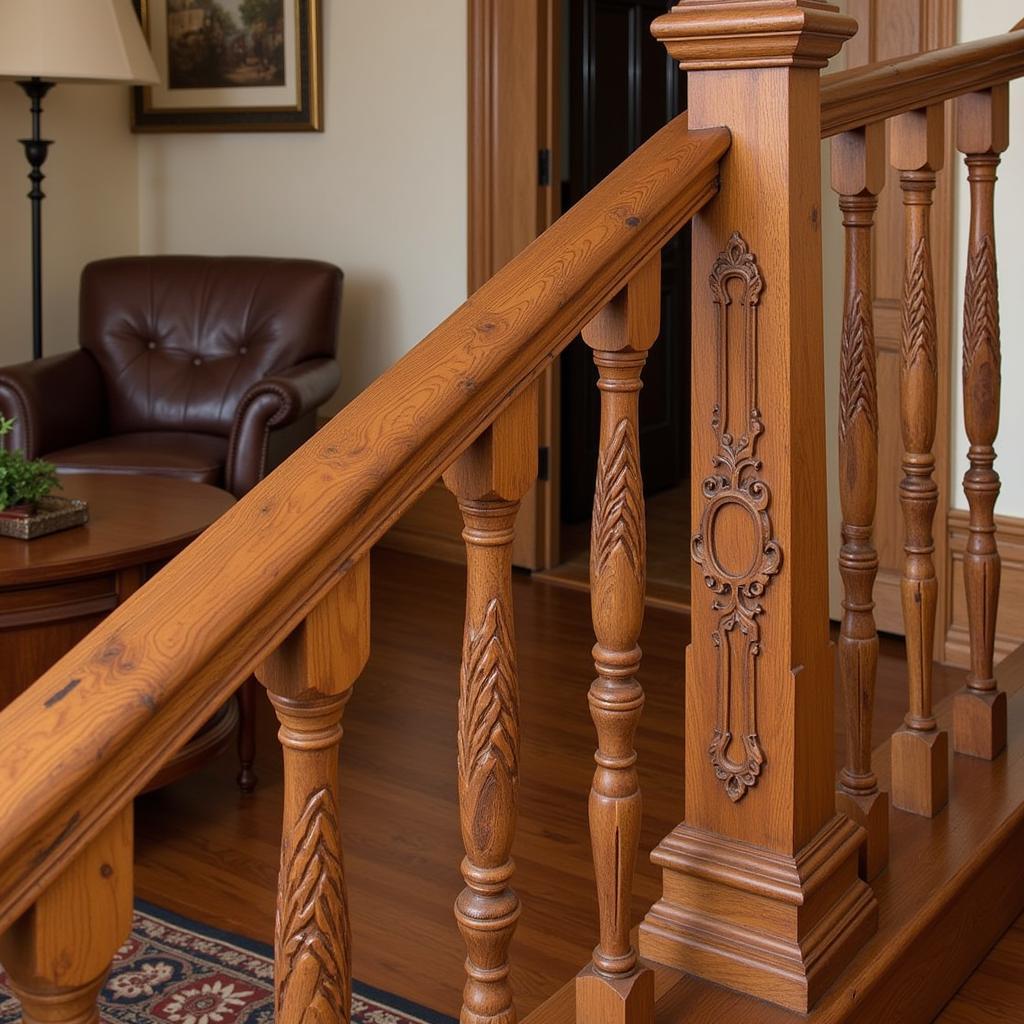Stairrails are an essential component of any staircase, providing safety and support while also contributing to the overall aesthetic of a space. Whether you’re building a new staircase or renovating an existing one, understanding the different types of stairrails, materials, and regulations is crucial for making informed decisions.
Choosing the Right Stairrail Materials
Stairrail materials play a significant role in both the functionality and visual appeal of your staircase. Common options include wood, metal, glass, and composites. Each material offers unique advantages and disadvantages, influencing the durability, maintenance requirements, and overall cost.
Wood stairrails provide a classic, warm look and can be easily customized to match existing décor. They are generally more affordable than metal or glass options. However, wood requires regular maintenance, such as painting or staining, to protect it from moisture and wear.
Metal stairrails offer exceptional durability and require minimal upkeep. They are available in various finishes, including wrought iron, stainless steel, and aluminum, allowing for a wide range of design possibilities. Metal stairrails can be more expensive than wood, but their longevity can make them a cost-effective choice in the long run.
Glass stairrails create a modern, sleek aesthetic and allow for unobstructed views. They are typically made of tempered glass for safety and durability. Glass requires regular cleaning to maintain its clarity and can be more susceptible to damage than other materials.
Composite stairrails offer a low-maintenance and durable alternative to wood. They are resistant to moisture, insects, and rot, making them ideal for outdoor or high-traffic areas. Composite materials can mimic the look of wood without the need for regular painting or staining.
 Modern glass stairrails enhancing a contemporary home
Modern glass stairrails enhancing a contemporary home
Stairrail Regulations and Safety Standards
Building codes and safety regulations dictate specific requirements for stairrail height, spacing, and strength. These regulations are designed to prevent falls and ensure the safety of those using the stairs. It’s crucial to consult local building codes before installing or modifying stairrails to ensure compliance. Typical regulations specify a minimum height for stairrails, usually around 34-38 inches, and maximum spacing between balusters to prevent children from passing through.
Understanding Local Building Codes for Stairrails
Local building codes may have additional requirements beyond the national standards. These can include specific material requirements, load-bearing capacities, and design specifications. Failing to adhere to these codes can result in fines and necessitate costly rework.
 Stairrail meeting safety regulations with correct height and baluster spacing
Stairrail meeting safety regulations with correct height and baluster spacing
Stairrail Design and Aesthetics
While safety is paramount, stairrails also contribute significantly to the overall design of a space. Choosing a style that complements the architecture and interior décor can enhance the visual appeal of your home. From traditional wooden balusters to sleek metal designs, the options are vast and varied.
Integrating Stairrails into Your Home’s Design
Consider the overall style of your home when selecting a stairrail design. A traditional home might benefit from a classic wooden stairrail with ornate balusters, while a modern home might be better suited to a minimalist metal or glass design.
 Ornate wooden stairrail in a traditional home
Ornate wooden stairrail in a traditional home
Conclusion
Stairrails are more than just safety features; they are integral design elements that can enhance the beauty and functionality of your home. By carefully considering the materials, regulations, and design options, you can choose stairrails that provide both safety and style for years to come. Understanding the various aspects of stairrail selection and installation ensures a safe and aesthetically pleasing addition to your home.
FAQ
- What is the standard height for a stairrail? Generally, stairrails should be between 34 and 38 inches high.
- What materials are commonly used for stairrails? Common materials include wood, metal, glass, and composites.
- Do I need to follow building codes when installing stairrails? Yes, adhering to local building codes is essential for safety and compliance.
- How do I choose the right stairrail style for my home? Consider your home’s overall architectural style and interior décor.
- What is the purpose of balusters in a stairrail system? Balusters provide support for the handrail and prevent falls.
- How often should I maintain my stairrails? Maintenance frequency depends on the material; wood requires more regular upkeep than metal or glass.
- Where can I find more information about stairrail regulations in my area? Consult your local building department for specific regulations.
Expert Insights:
- John Smith, Architect: “Stairrails are a critical safety feature, but they can also be a beautiful design element. Don’t overlook their potential to enhance your home’s aesthetic.”
- Jane Doe, Interior Designer: “Choosing the right stairrail material and style can significantly impact the overall look and feel of your space.”
- David Lee, Construction Manager: “Always consult local building codes before installing stairrails to ensure compliance and avoid costly rework.”
Related Articles:
- Staircase Design Ideas
- Home Safety Tips
- Choosing the Right Flooring for Your Home
Need assistance? Contact us at Phone Number: 0902476650, Email: [email protected] Or visit us at: 139 Đ. Võ Văn Kiệt, Hoà Long, Bà Rịa, Bà Rịa – Vũng Tàu, Việt Nam. We have a 24/7 customer support team.





